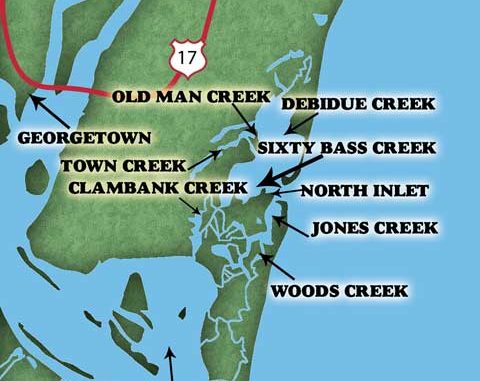
North Inlet redfish are there for patient fisherman in the depths of winter.
The groundhog pops out on Feb. 2, and if he sees his shadow, he goes back in his hole to prepare for six more weeks of winter weather.
But that’s in Pennsylvania.
In South Carolina, if that same field pig pops his head out and sees sunlight, he’s liable to go back in his hole and emerge carrying a spinning outfit and a push pole, headed for the marina to crank up his flats boat and motor to the marsh to look for redfish.
That may be a surprise to a lot of people who put their tackle away at Christmas and don’t take it back out until springtime arrives, but nobody has ever questioned whether fishermen have more gray matter than groundhogs.
Of course, the groundhog is wearing a built-in fur coat.
But having your tackle good and ready in February can give you a huge advantage on some of the most interesting fishing for reds — aka puppy drum, spot-tail bass, channel bass, red drum — of the year.
At what other time will reds form up in huge schools that don’t move a great deal, except when pushed by the tide? At what other time are they so easily spotted because of gin-clear water? At what other time can you find those kinds of numbers of redfish in relatively restricted areas? At what other time will the redfish not really have a buffet of baitfish and crustaceans in the vicinity on which he can make a meal if he passes up your offering?
Steve Hedrick and Eric Heiden are a couple of guides in the Georgetown area who know that the answers to the questions in the preceding paragraph should all push fishermen out into the marshes in search of reds. February fishing may not be the best on the calendar, but the unusual set of conditions make certain that it’s not the worst.
“In February, when the water gets good and cold — and the weather trends we’re getting say that we should — the redfish will school up in the backs of little creeks. They’ll get out of the big creeks to where the porpoises can’t get back to ’em,” said Hedrick (843-344-2474 or 843-546-4629), who operates Reel EZ Charter Service. “You’ll find fish of all sizes that are trying to get into water that’s just a little bit warmer — sand bottoms are good. That’s what they’re looking for. It might be just one degree warmer, but that’s a lot.
“They’re hanging out; they don’t want to move too far because the algae bloom is gone because it’s so cold, so the water is crystal clear, and the porpoises are looking for them.
“That’s why they stay in the extreme backs of creeks.”
No one who is able to look at a map would dare say that there aren’t plenty of creeks in the Georgetown area. Both Hedrick and Heiden, who runs Eric’s Ark Charters, said there’s no real need to make use of the immense area around Winyah Bay and its tributary rivers. The maze of creeks that feed North Inlet offer plenty of opportunities to find big schools of winter redfish.
“The best fishing is around North Inlet and in the creeks around Debidue (island),” said Heiden (843-230-7286 or 843-546-1776). “They’ll be in shallow water; they’ll come up when it’s sunny.
“You run the creeks on a falling tide until there’s very little water, and they’ll be left in the deeper pools. You get a nice day, and they’ll slide up on the edge of the pool and sun — and they’ll eat anything.”
The cooling water in the fall and early winter forces pretty much every baitfish, plus most of the shrimp and crabs, into the warmer ocean waters. The cold water puts a lot of redfish in a fairly restricted area — redfish with an appetite. Fishermen can strike gold with a variety of artificial baits — stream flies, curlytail grubs and other soft-plastic baits, even cut bait that was fresh frozen and brined six months earlier.
What’s the catch? Well, it’s the clear water. The threat of predation by porpoises and the extremely clear water makes the reds extremely spooky. It doesn’t take much to spook an entire school, and that pretty much ends that day’s fish in that particular creek.
“They’ll school from the end of December all the way through February,” Hedrick said. “You’ll have every different size fish you can think of in a school. It’s not like you can say that this is a school of 12-inch fish or this is a school of 15-inch fish or this is a school of 30-inch fish. You’re just as likely to catch a 30-inch fish and a 12-inch fish together.
“But they’re spooky,” he said. “You have to use a 7- or 7-1/2-foot rod and make real long casts. Your presentation has to be perfect. If you spook ‘em, they’ll either move farther back where you can’t get to ‘em, or they’ll all come flying out of the creek past your boat, and they’re gone — spooked for the day. You might as well leave that creek and go try them somewhere else.”
Heiden said that he likes to fish smaller feeder creeks that dump into larger creeks that are more likely to be marked on most charts. It’s a matter of extremely shallow water, a flats boat or flat-bottomed john boat, rigged with an electric trolling motor or a push pole — that’s what it will take to get within casting range of reds. Once you find an area that is holding reds, you can check it on a regular basis and cast to fish once you find them.
“When you find ‘em in a creek, you run out of water,” he said. “You go in there where you’ve got very little water, and as the tide falls, you try to get back out. They move as the tide falls.”
Heiden likes to fish a medium-light or medium-action spinning outfit, including an Eagle Claw spinning reel spooled with 12-pound test line. He sticks mostly with a 1/8- to ¼-ounce leadhead jigs onto which he threads a curlytail grub or a Gulp molting shrimp. Electric chicken and new penny are his favorite colors.
“The newest Gulp baits are better because the scent lasts forever. It does make a difference at this time of year,” he said. “You need a slow retrieve — shoot, sometimes you don’t have to do anything but let it sit. I’ll cast to a school and make a real short retrieve, then stop it, then a short retrieve, then stop it and let it settle down to the bottom. Usually, you’re fishing in one foot of water or less. I’ll cast to the edge of a school; I don’t try to cast right to the middle of them because you don’t want to spook them and scare them off.”
Heiden said the edges of big pods of reds may be the best shot for another reason. The shallowest water is usually the warmest, because the sandy marsh bottoms get good mid-day sunshine.
Hedrick keys on what he likes to call “little finger creeks.” He first noticed the amount of reds back in those kinds of areas while oystering several years ago. “They’re just sitting back there,” he said. “I got into ’em a couple of years ago when I was out oystering. I was walking from one oyster bed to another, and I saw all these redfish in the backs of the creeks.
“They’re more in the finger-type creeks, the shallow ones, than they are on the main creeks. You might find ‘em on points, but not on those main creeks.
“On a falling tide, they’re so far back that they’ll move out, but not to the main channels. I look for them in the sunny portions of creeks. I know the (SCDNR) guys have been flying over the marsh, looking down at those creeks and seeing all those reds and saying, ‘Oh my gosh.’”
Hedrick said that big schools of reds are not hard to find. The water is so clear, and there are usually so many fish, that the school shows up as a dark shadow under the water. And then, there’s the peculiar “torpedo-shaped” wake that a redfish makes as it is cruising just below the surface. There’s no mistaking it for the sharper “V” wakes made by smaller baitfish such as mullet, at other times of the year.
“You need to be looking well ahead of your boat,” Hedrick said. “Sometimes they’re so shallow that you can see their fins sticking out of the water. If you aren’t already on your trolling motor, you need to get on it right away. I use a Power Pole when I’m back there. When I see ’em, I stop the boat immediately and start casting.”
Hedrick likes spinning tackle when stalking winter redfish. He’ll fish soft-plastic artificials — the Gulp molting shrimp in the new penny color is one of his favorites — on a leadhead, but he’ll also fish cut bait under a cork or on a Carolina rig. Live bait is typically unavailable.
“There are some real small minnows around oyster beds, and a lot of little red worms in the oyster beds,” he said. “If you want to, you can catch ‘em on a piece of cut mullet if you have some that you’ve caught fresh back in the summer and brined — salted. Big reds will go crazy over them. I’ll fish them under a cork or on a Carolina rig, with a leader of about 18 to 24 inches of 25-pound Seaguar fluorocarbon.
“The presentation has got to be real subtle. I’d rather short cast than throw right in the middle of them.”
Hedrick also said that winter reds are suckers for a spinnerbait, “but you have to slow roll it,” he said. “I like to fish a spinnerbait with double blades, gold Colorado blades, with a little pink in the body to give it a shrimpy look. I like to throw it way past my target and bring it back slowly, slowly — just enough to keep the blades moving.”

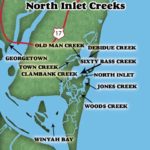
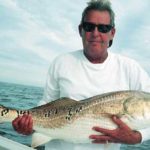
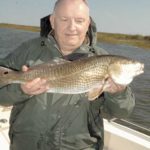
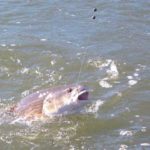
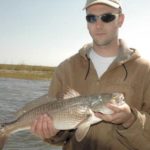
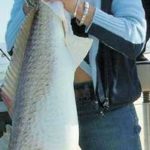



Be the first to comment